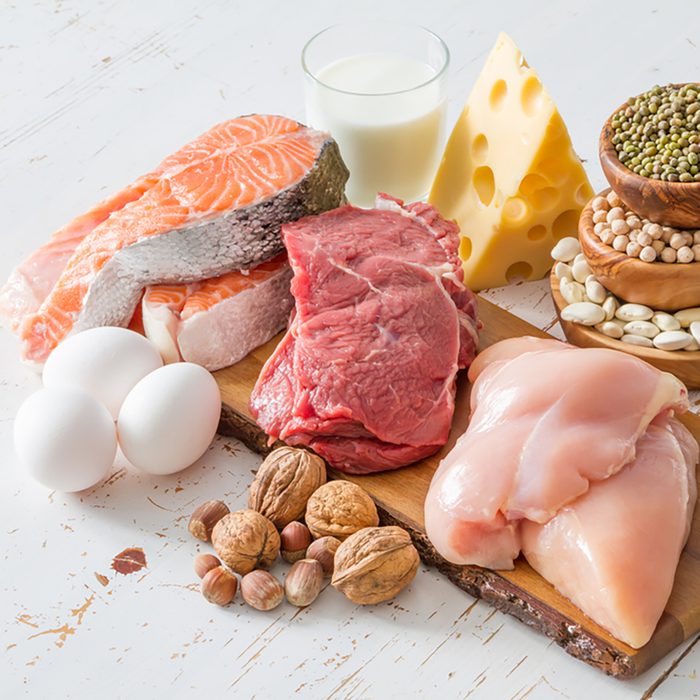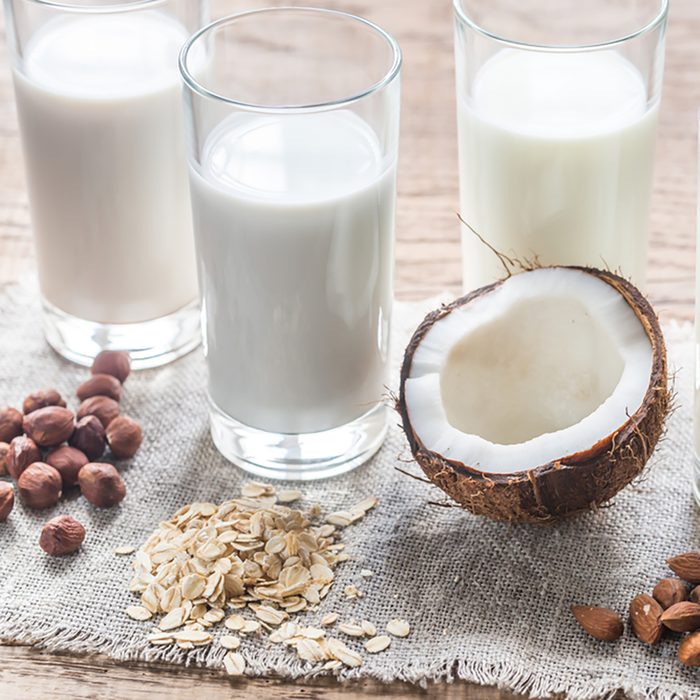
Add Vegetables
The gooey goodness of mac and cheese makes the perfect base for most any vegetable. Depending on the season, I like to work in tomatoes, peas, corn, broccoli, spinach, mushrooms and/or zucchini. This adds all sorts of good fiber and nutrients! Use this Veggie Macaroni and Cheese recipe as a great jumping-off point.

Switch up Your Cheese
One way to cut back the fat and cholesterol in your mac and cheese is to switch up the kind of cheese you’re using. By choosing a lower-fat cheese or even subbing out some of the cheese for cottage cheese, you’ll cut down on the amount of saturated fat and cholesterol in your final dish. Grab Swiss cheese (the cheese with the lowest sodium content) and you can also reduce the salt load of the dish. Here are some other tricks to try if you’re avoiding sodium.

Change Your Pasta
Swap out the usual refined pasta with whole wheat to increase the fiber, vitamin and mineral content of your mac and cheese. You can also add plant-based protein to your dish by choosing a chickpea, lentil or edamame-based pasta for your cheesy mac.

Enrich Your Sauce
Be sneaky—add pureed squash, carrots, cauliflower or parsnips to your cheese sauce! The extra vegetables are great healthy additions because they provide fiber and micronutrients, and their color won’t give away that you’ve added some extra nutrition to your dish.

Skip the Meat
Forgo the bacon or cut-up hot dogs in your next batch of mac and cheese. You can exchange the meat for vegetables or a healthy protein like tofu, beans, diced chicken or tuna fish. It will cut back the cholesterol and sodium and pack in more protein.

Use a Lighter or Non-Dairy Milk
Use less heavy cream, half-and-half or whole milk in your cream sauce, making up the difference with 2% milk or skim. You might also choose an alternative milk like almond, cashew, soy or coconut. As long as you’re buying the unsweetened versions of these alternative milks, their flavor tends to be so neutral that you won’t be able to tell the difference!

Skip the Baking
By avoiding that last addition of cheese and breadcrumbs, you’ll cut down on the fat and calories. If the crispy edges are what you’re after, try baking your mac and cheese without adding extra cheese and breadcrumbs on top or reducing how much you add at the end. You might also make a Skillet Mac & Cheese like this one.
